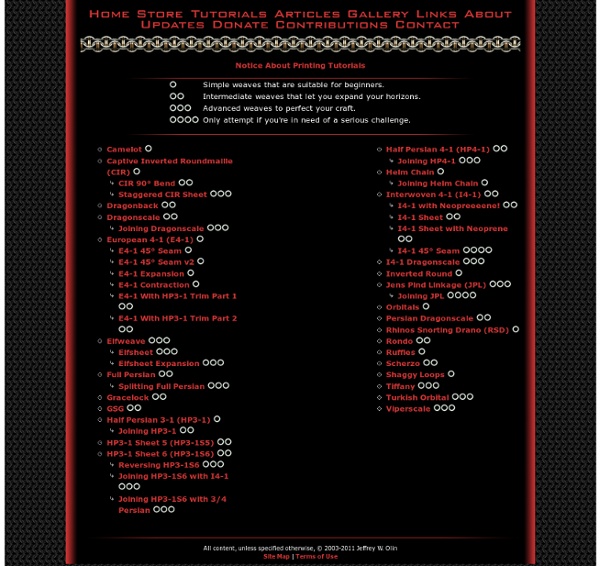



Basic Chainmail Step #1: Buy or make your own rings. PrevNext For this project, we'll create square and triangular swatches of chainmail, which are the basic building blocks for anything larger. There are two ways to go about this: you can make your own rings from stripped aluminum electrical wire, store-bought wire, or coat hangers, or you can buy the rings ready-made from sources like you'd like to create your own rings, begin with the wire of your choice. For lighter pieces, you might try aluminum wire. Step #2: Knit your rings into chainmail swatches. Once you have a few hundred rings, you’re ready to start knitting (for reference, a full hauberk takes about 10,200 rings). Step #3: Knit your rings into chainmail swatches (cont'd). Your first string should be twice as long as the first row in the swatch you’ll be making. Step #4: Connect swatches to make armor (or anything metallic!).
Head Piece - Chainmail Head Pieces - Gallery - TheRingLord <div class='message error'><strong>Javascript Disabled Detected</strong><p>You currently have javascript disabled. Several functions may not work. Please re-enable javascript to access full functionality.</p></div><br /> Back view Set as Photo Save Cancel
Introduction to chainmaille Have you ever started knitting a sweater and thought, "I wish this had better protection against arrows?" You may want to consider putting down your knitting needles for a pair of pliers and start making some chainmaille.* Chainmaille is a strong yet flexible metallic fabric constructed from rings. Though I would strongly recommend against relying on it to block a sword or arrow, chainmaille armor can be constructed for such uses. Actually making chainmaille can be a fun and relaxing task; though it may seem slow, at times. For this introduction, I will describe how to make chainmaille starting from rings. *EDIT: As it has been (reasonably) pointed out, chainmaille is NOT good protection against piercing blows, such as arrows.